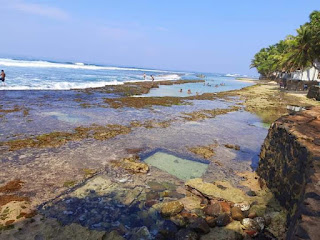It is located on the southeastern coast of Galle, in the Galle region of Sri Lanka. It was built by the Portuguese in 1588. It was extensively renovated by the Dutch in the 17th century.
Galle is a World Heritage City. Spread over an area of 6.5 square miles, Galle has long been known as a trading city. The Port of Galle was an advanced port in the East as well as a trading center. AD The history of Galle begins in 1505 with the arrival of the Portuguese general Lorenzo de Almeida, who accidentally landed in the port of Galle. The Pannaradhana gate, which was to be entered by crossing a high and low bridge over a moat, can still be seen on the fort wall today. The two doors used back then are still in use today. On the inside of the door is the logo of the Dutch East India Company, and on the front of the door is the royal emblem of Bhirdan. The fort was captured by the British in a treaty in 1795.Galle Fort, the most important administrative center of Sri Lanka during the Portuguese and Dutch eras, has all the hallmarks of a city. The largest building in the fort is the Dutch warehouse.
The beautiful clock tower was erected in 1983 in memory of Peter Daniel Antonis, a social worker and the first member of the Galle Municipal Council.
The tallest building in the fort is the Aman Galle Hotel. Known until recently as the New Oriental Hotel, it was built in 1684 with 12 wooden floors. Other notable sites include the dilapidated Dutch Administration Building and the nearby Fort Library, considered to be the oldest library in Asia. There are 3 museums in Galle Fort.
1 National Maritime Museum
2 Maritime Archaeological Museum
3 Galle National Museum
The fort has housed a large number of government offices since ancient times. Over time, due to development work, they are being removed from the wall.
 |








0 Comments